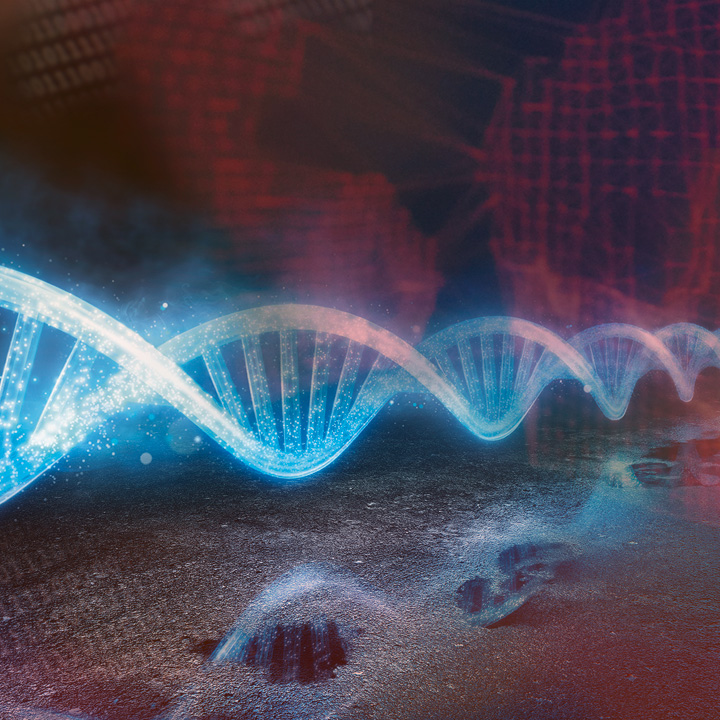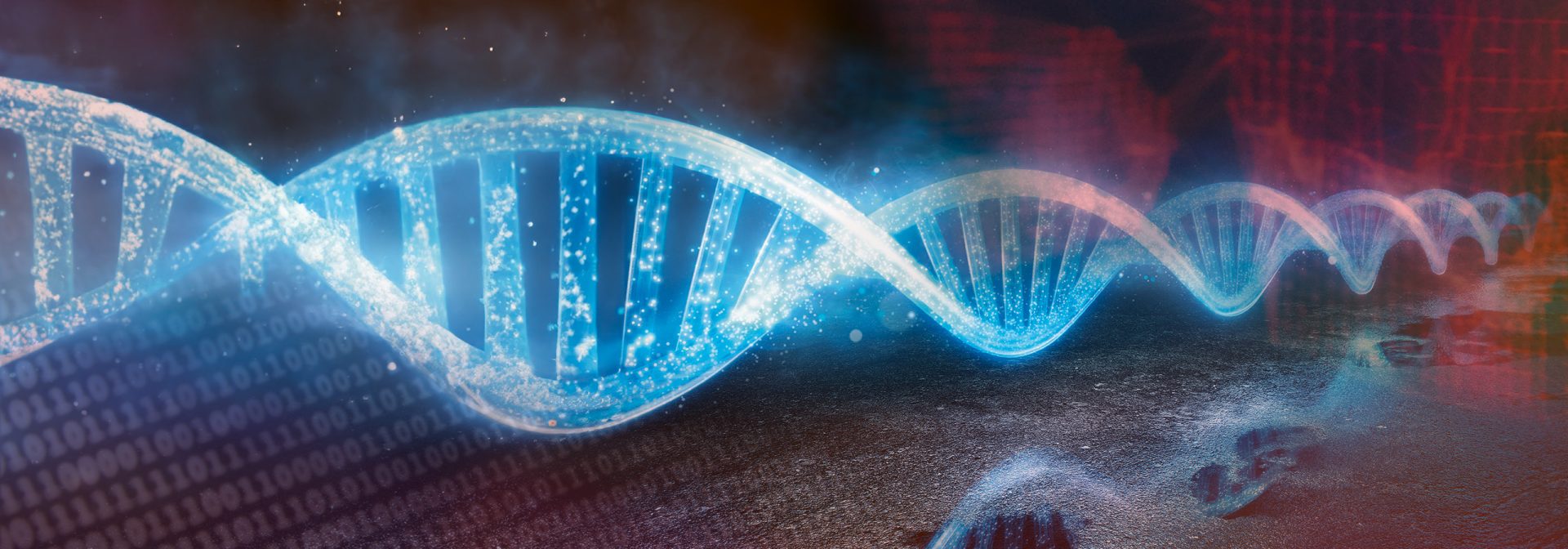The Stochastic Cognitive Model is based on a cognitive architecture, meaning that cognitive processes of a human driver can be simulated with the SCM. These cognitive processes are gaze behaviour, the processing of the data in the mental model, situation recognition based on the data, and the decision to carry out an action based on the recognized situation.
GAZE BEHAVIOR AND VISUAL ATTENTION.
As most of all relevant information during driving is perceived visually, the modelling of human visual perception constitutes an essential part of the Stochastic Cognitive Model. The realistic simulation of human gaze behaviour is highly relevant because all subsequent cognitive processes – including situation assessment and reaction to the given situation – are highly dependent on the information that comes from the gaze behaviour. This is why visual attention modelling is key to traffic interaction modelling.
Gaze behaviour in the SCM is modelled through stochastic processes by applying gaze distribution matrices which specify frequency of gaze allocation and gaze duration. Gaze directions are additionally influenced by top-down or bottom-up attention. Top-down is the voluntary allocation of attention according to the driver's intentions and goals, whereas bottom-up attention is the reflexive allocation of the attention to salient stimuli in the environment. Data as input for the models has been recorded in BMW naturalistic driving studies and simulator experiments.
Bottom-up gaze behaviour represents a higher probability of gaze relocation due to optical stimuli in the surroundings. In the simulation, this is triggered when another vehicle overtakes the ego vehicle, for example, or when another vehicle in the area in front activates the indicator. The video shows the relocation of the SCM agent’s gaze target to the front left-hand side when being overtaken by another vehicle. Top-down gaze behaviour is conscious gaze relocation due to driver purposes and intentions. In the simulation, this is especially relevant when it comes to lane change manoeuvres. The video shows the relocation of the SCM agent’s gaze target to the left before starting a lane change manoeuvre. Based on the gaze behaviour of the SCM, it is even possible to model distraction scenarios.
- Scenario 1.
- Scenario 2.
- Scenario 3.
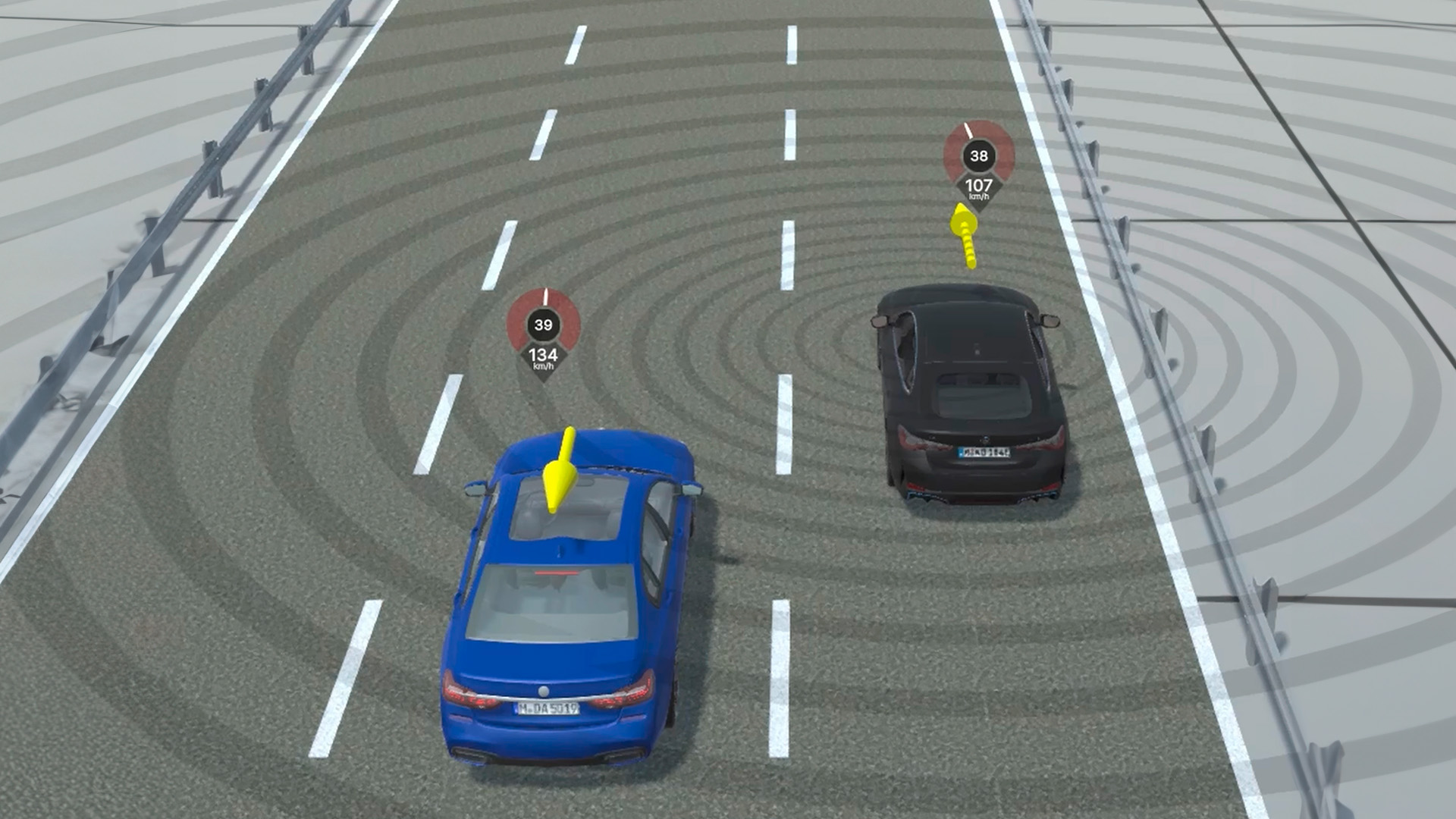
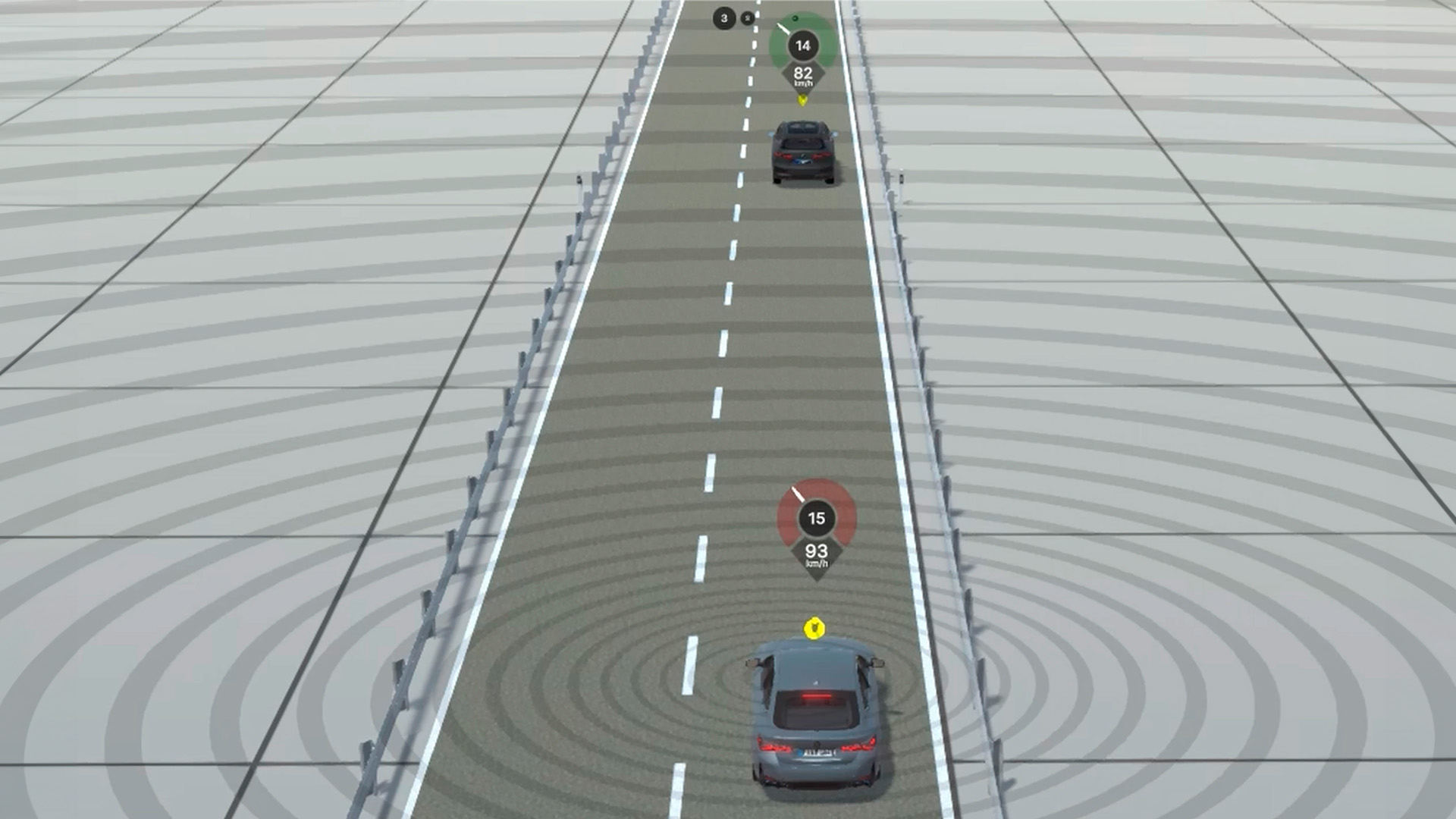
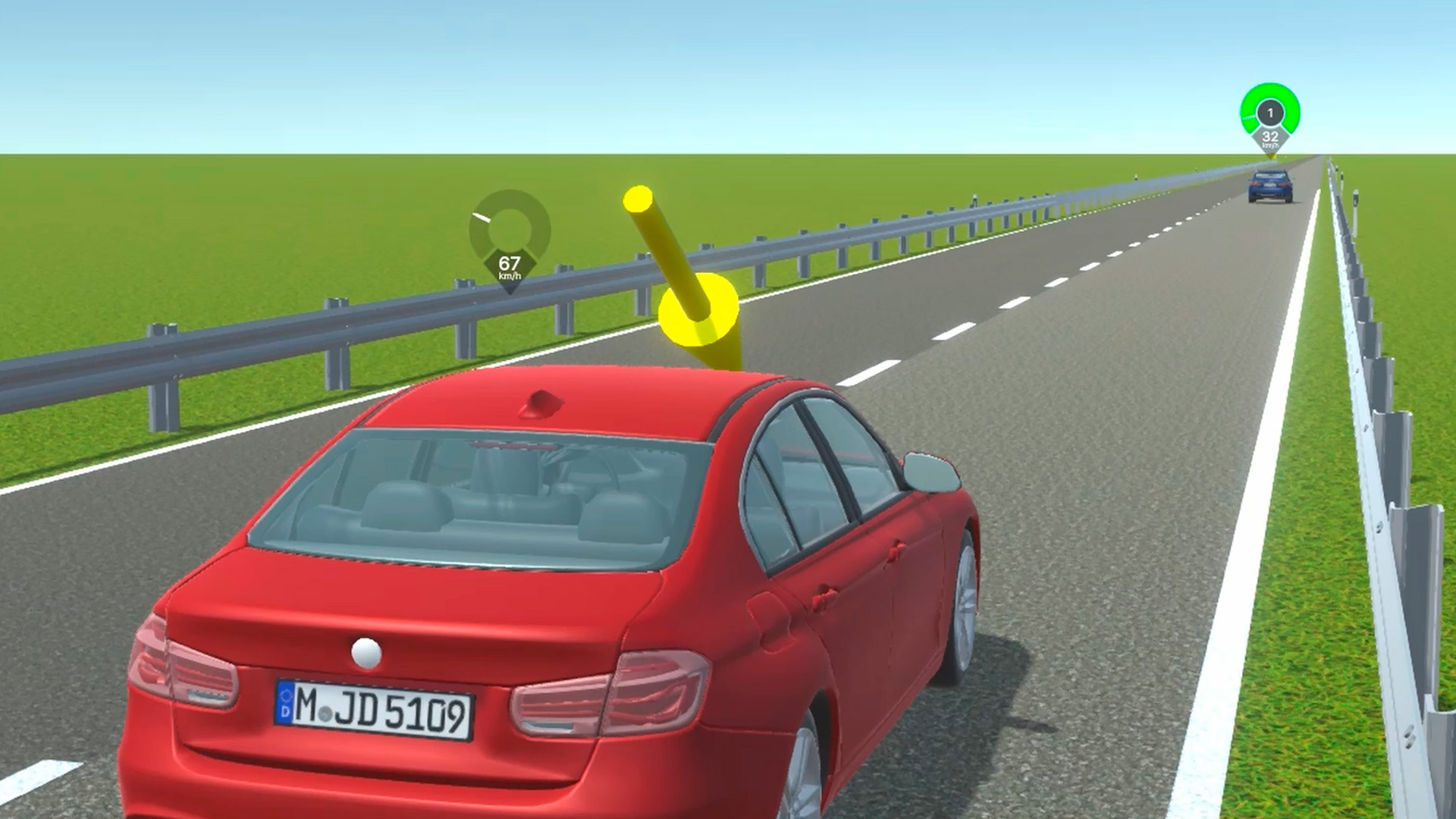
AGENT'S MENTAL MODEL.
All the information that is gathered through the gaze behaviour is handled in the agent’s mental model, which represents the driver’s internal environment model. This internal environment model is essential for all decision-making processes and cognitive evaluations. Due to the gaze behaviour of the agent and the inherent error-proneness of perception, the information stored in the mental model might be incomplete or inaccurate.
Information is generally classified into three types:
Microscopic information considers data that describes the microscopic traffic around the driver, i.e. accelerations, velocities, and distances of surrounding vehicles.
Mesoscopic information describes data that is aggregated over several other vehicles, such as the mean velocity in a specific lane.
The third type is infrastructure information. This type describes such things as the number of lanes of the current road, road markings, and traffic signs such as speed limits.
The mental model is not only used to store information but also calculates relevant data for decisions on required actions. For instance, if an SCM agent prepares for a merging manoeuvre, drawing on the perceived data of the other vehicles such as velocities and accelerations the mental model evaluates from the position of the surrounding vehicles if there is enough space for the ego vehicle to merge into a specific gap.
See here for more information on how the agent’s mental model can be visualised in simulations.
SITUATION RECOGNITION.
From the information that is processed in the mental environment, an agent recognises and evaluates the given situation at the current time. From the information given, specific features are extracted which characterise certain situations. This means that an SCM agent recognises specific characteristics of situations, such as a switched-on indicator, which is one of several features for the perceived situation of another vehicle changing lanes. The existence of and relationship between several features leads to the calculation of situation intensities which describe the degree to which the situation matches pre-defined categories such as “lane changer from left” or “following”.
The recognition of the situation is a stochastic process in which situations with a higher intensity have a greater likelihood of being selected. The stochastics consider that whenever there are several possible situations, different individuals might recognise an alternative situation, for example as a result of ignoring specific information, subjective preferences, or even an incorrect understanding of the situation, which can occur in real-world human behaviour.
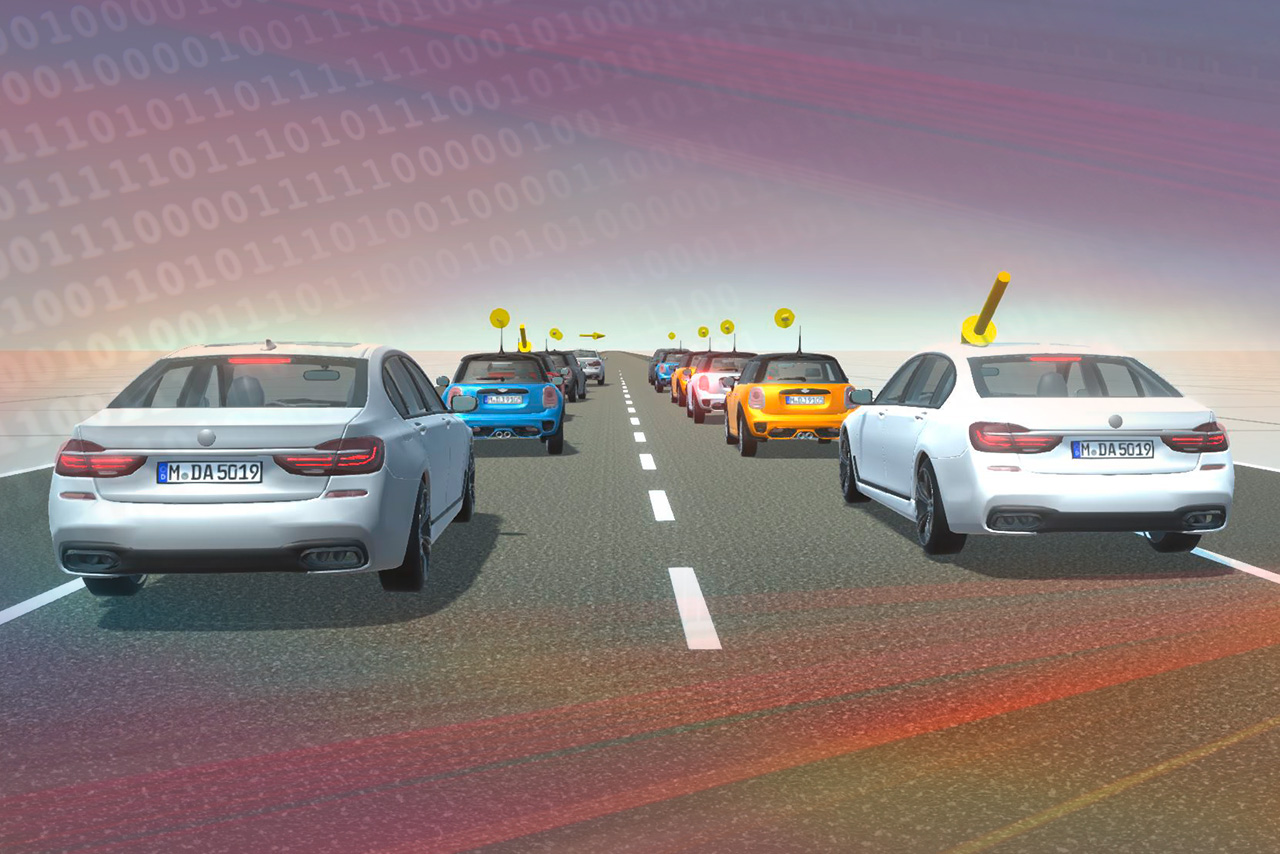
DECISION ON ACTION AND EXECUTION.
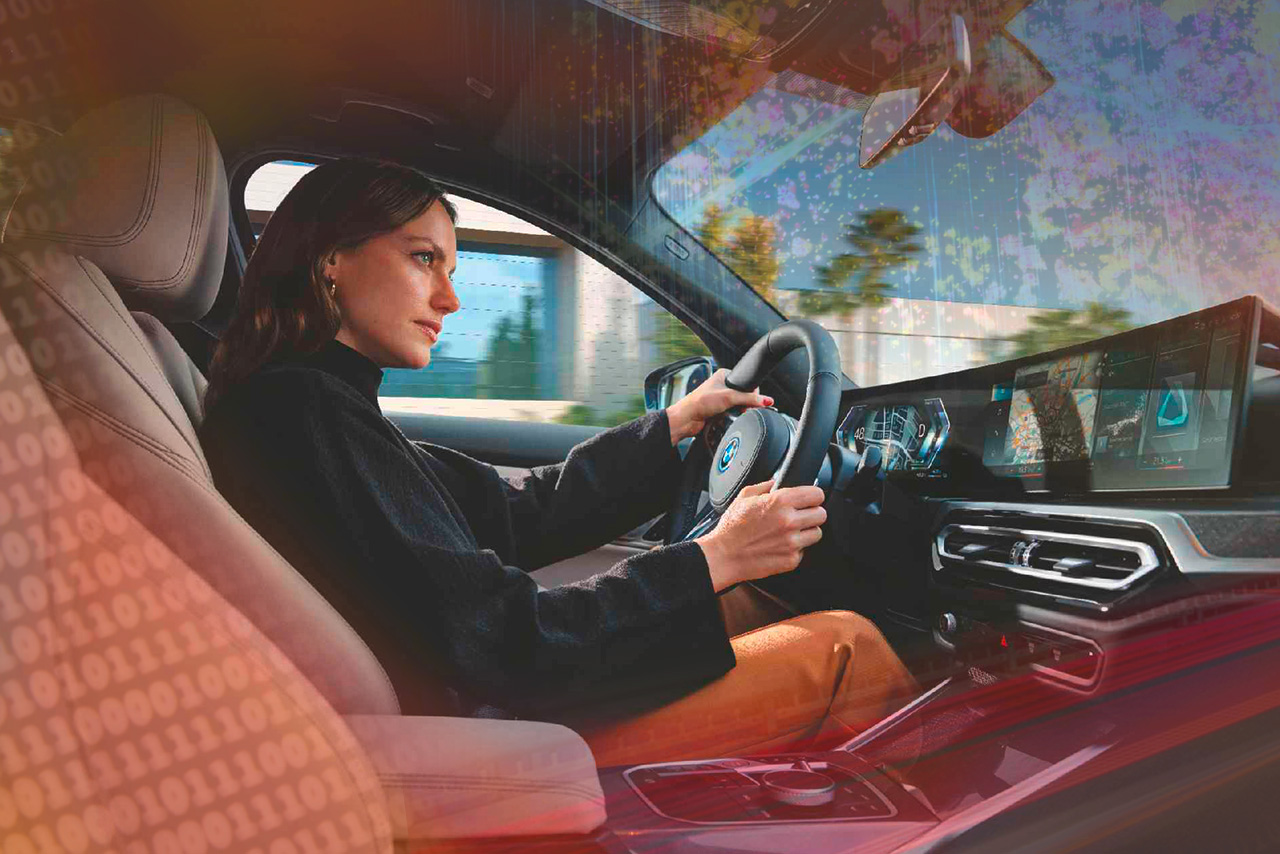
An SCM agent decides on a situation-specific action to react to the identified situation. Depending on the situation itself, the relevant features identified in this situation and additional data from the mental model, the virtual driver opts for a longitudinal and a lateral action.
Through the driving dynamics of the vehicle, the SCM agent’s pedal positions are converted to appropriate command variables, i.e. longitudinal acceleration and curvature for the vehicle’s guidance. Also, all secondary driver tasks are set such as actuation of indicators. The action is executed, and the movement of the vehicle is adapted to the new actions accordingly. Other agents in the simulation will recognise that movement through their gaze behaviour, identify a specific situation, and vice versa react to the actions of the first agent. These actions and reactions result in overall traffic behaviour and in the interactions between all the agents in the simulation.
